In recent years, the relationship between Pakistan and Afghanistan has been marred by persistent border skirmishes and geopolitical tensions. Each flare-up at the border is accompanied by a surge in propaganda aimed at Pakistan, specifically targeting its armed forces. This report delves into the orchestrated campaigns emanating from across the Afghan border, which seek to defame and undermine the reputation of Pakistan’s military. By analyzing the patterns, content, and impact of these propaganda efforts, the report aims to shed light on the series of disinformation campaigns and their implications for regional stability and bilateral relations between the two nations.
Recent Developments
On 18 March, Pakistan carried out air strikes inside Afghan territory in the southeastern provinces of Paktika and Khost. Taliban’s Ministry of Defense said its forces targeted a Pakistani military center along the border following what it said were air strikes carried out by Pakistan. The incident comes two days after a suicide attack targeted a military checkpost in Pakistan’s North Waziristan district in the Khyber Pakhtunkhwa province, which borders Afghanistan. Seven Pakistani security personnel were killed in the attack.
Recent developments in Pak-Afghan relations have taken a tense turn following a series of fake news making rounds on social media platforms across the border, targeting Pakistan’s armed forces, and escalating existing tension between countries. We have identified and debunked fake claims that gained traction on social media after the recent Pak-Afghan border tension.
Case Study 1 – Advancement of Taliban in Pakistan
The Afghan accounts;خــالد کندهاری/ Hafiz Khalid, د مولوی یعقوب(مینوال), 🦅عقاب افغان الحنفي, Uqab, مسلم کندزى𝐌𝐮𝐬𝐥𝐢𝐦 𝐊𝐚𝐧𝐝𝐨𝐳𝐢 shared a post that claimed Taliban advancements against Pakistan Armed Forces after Afghan Taliban retaliated by targeting Pakistani positions along the border in response to Airstrike carried out by Pakistan Army on suspected Tehreek-e-Taliban Pakistan (TTP) hideouts in Afghanistan’s Khost and Paktika provinces on March 18, 2024.


At the time of reporting, these posts collectively had more than 25K views.
Fact Check
To verify the claim’s authenticity, a comprehensive fact-checking process was initiated. A reverse imaging technique was employed, revealing that the shared picture is actually from Marib, Yemen, and dates back to September 2021.

Conclusion
Our fact check confirms that the image circulating on social media, claiming Taliban advancements against the Pakistan Army, is actually from Marib, Yemen, and dates back to September 2021. The misattribution of the image and the inaccurate context undermine the credibility of the claim and highlight the importance of verifying information before concluding.
Case Study 2 – Circulation of a Fake Official Letter
The Afghan accounts; Najib Farhodi, Abduljabbar Omari, Basir Furogh, and Hamdullah. H shared a post that claimed Prime Minister Shahbaz Sharif had written a letter to Chief of Army Staff General Syed Asim Munir informing him to sell Pakistan Navy warships PNS (Jinnah F265) and PMS( Zulfiqar) F251) to Bangladesh to tackle the economic crisis in the country.




(Screenshots from X)
Fact Check
To check the authenticity of the claims made by the Afghan accounts, our team began a fact-checking process. We started by confirming the authenticity of Prime Minister Shahbaz Sharif’s official signature. We discovered that the signature on the circulated letter did not match Prime Minister Shahbaz Sharif’s official signature.


(Real Signature of PM Shahbaz Sharif) (Fake Signature of PM Shahbaz as Shown on Circulated Letter)
We also verified the layout of official documents of the Prime Minister’s Office and found that the official format doesn’t match the letter shared by Indian propaganda accounts.
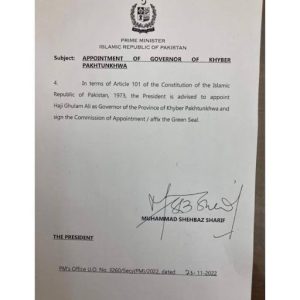
(Picture of an Original Official Letter)
Moreover, We found that the leopard’s logo used on the letter in the top left corner is from an Afghan propaganda account “Task Force Snow Leopard – Afghanistan” involved in circulating multiple fake letters to defame Pakistan.


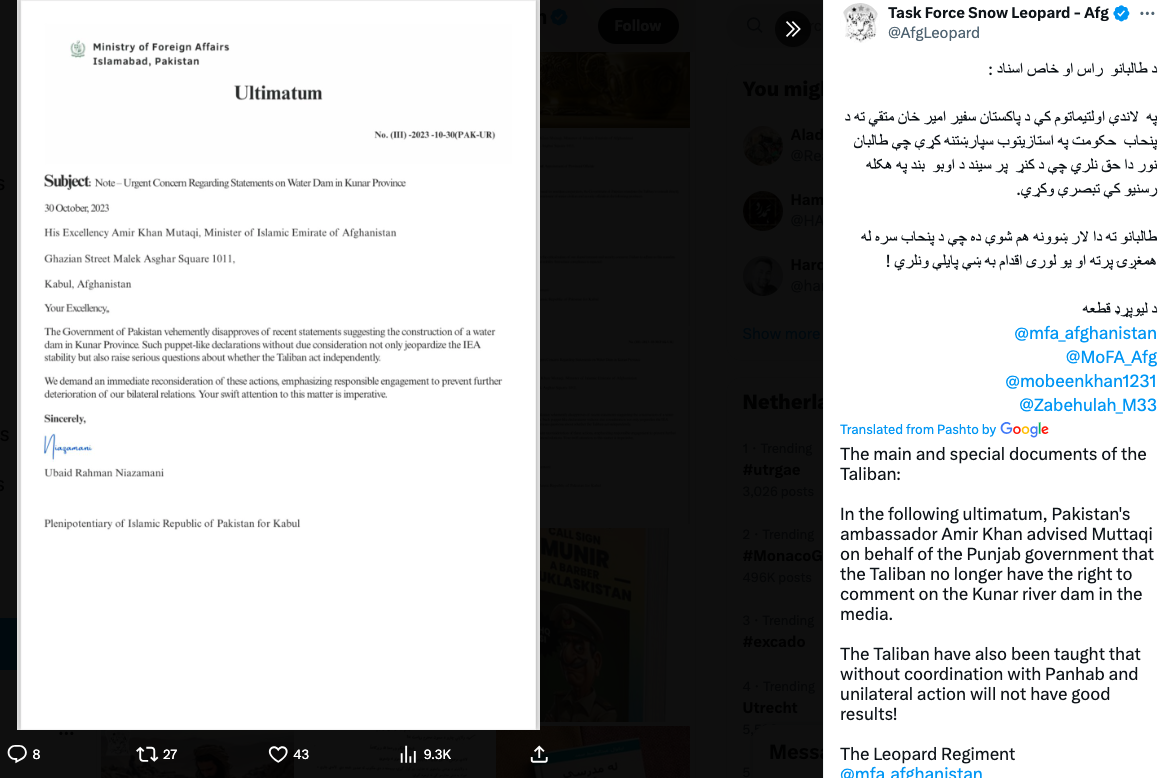
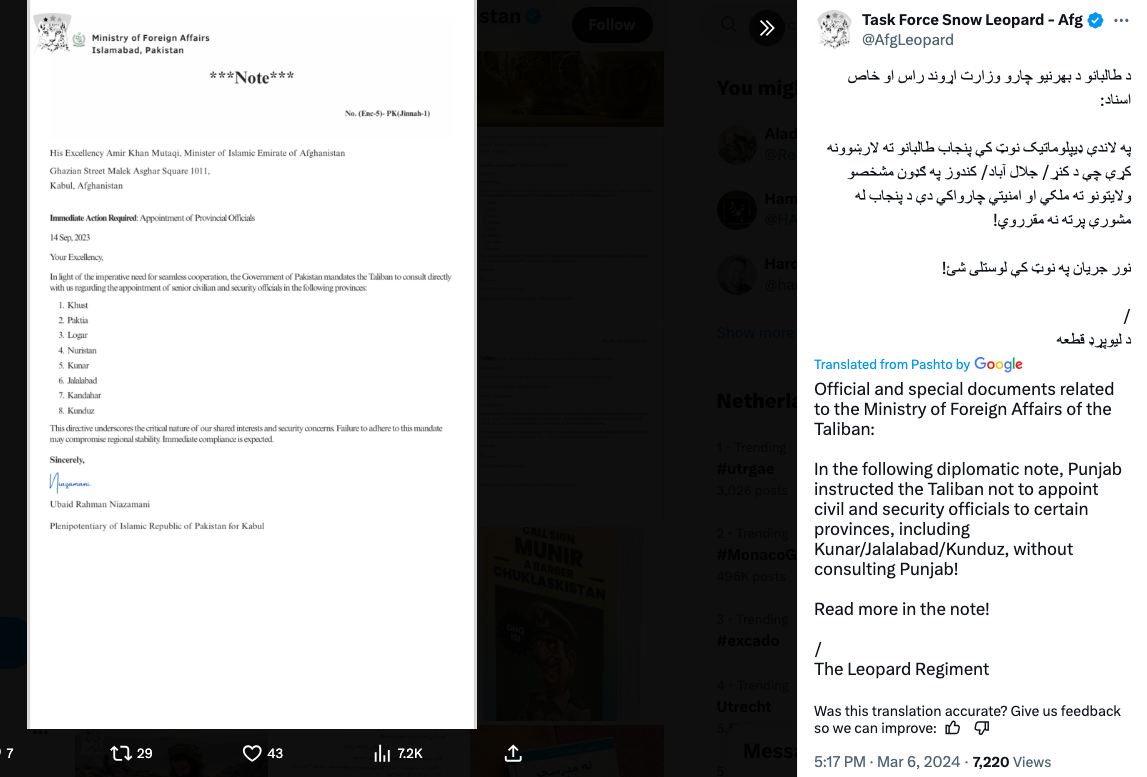
(Screenshots of fake letters)
Conclusion
Our fact check confirms that the circulated letter claiming Pakistan is selling navy warships to Bangladesh is fabricated. The discrepancies in the signature, the incorrect document layout, and the use of a known propaganda account’s logo as a source all indicate that this claim is false.
Case Study 3- Did the Pakistan Army Bomb Civilians in Waziristan?
A viral video purportedly on X (formerly Twitter) is shared with the captions “Today is 4th of Ramadan and 🇵🇰 army once again bombed and shelled innocent civilians in North Waziristan this evening. I checked myself, 5 people are dead and 15 are injured in Raghzai, WANA.”
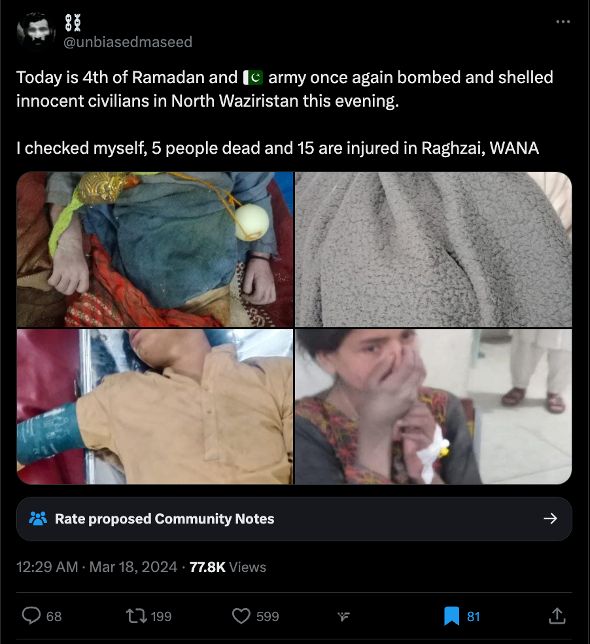
Another X user posted the same clip with the following caption “How is the Pakistani military any less evil than what Israel is doing in Gaza? Both entities are backed by US and both entities kill innocent Muslim children.”

The claim gained traction on social media, particularly on X (formerly Twitter), the claim was shared here, here, here and here accumulating more than 100K views.
Fact Check
To verify the claim’s accuracy, an extensive fact-checking procedure was undertaken. A reverse image search revealed that the tragic incident occurred in the Raghzai area in the South Waziristan tribal district of the Khyber Pakhtunkhwa province on March 4, 2024. At least six persons in a family, including two children, were killed after the roof of their room collapsed.
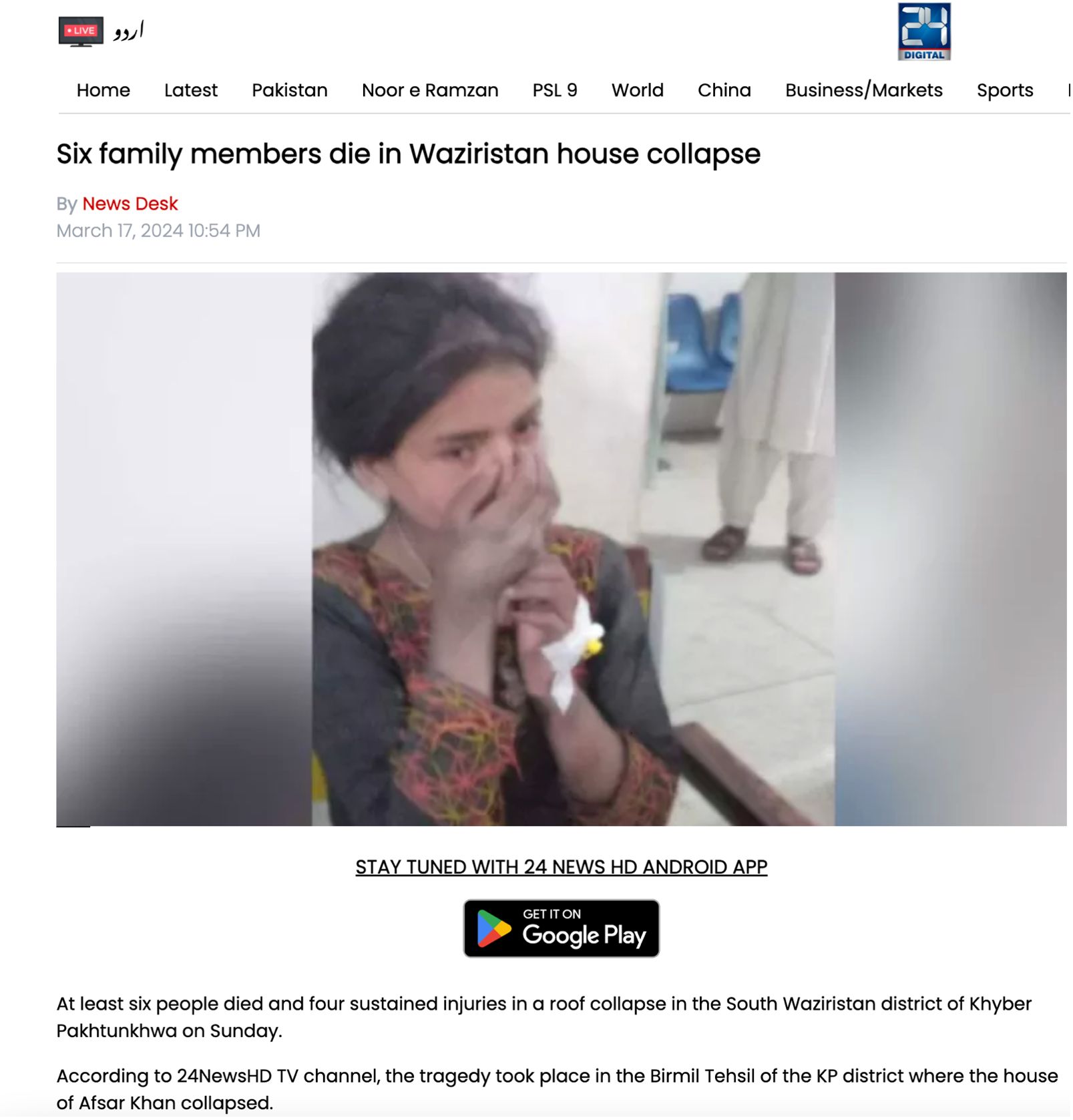
Conclusion
Our fact check confirmed that the video in question does not depict an incident of the Pakistan Army bombing a house in North Waziristan. Instead, it shows a tragic event in the Raghzai area of South Waziristan on March 4, 2024, where six individuals, including two children, lost their lives due to a house roof collapse. This misinformation underscores the importance of verifying claims before sharing them to prevent the spread of false narratives.
Case Study 4 – Police Brutally Beating Afghan in Pakistan
An Afghan account posted a video on X(Formerly Twitter) with the caption “The treatment of the Zionist police of Pakistan with the people, Do you still wonder why the Balochs and Pashtuns are fighting against the Pakistani system?” showing visuals of a person getting tortured by the Police officials.
The post was reshared more than 200 times and had more than 69K views while reporting.
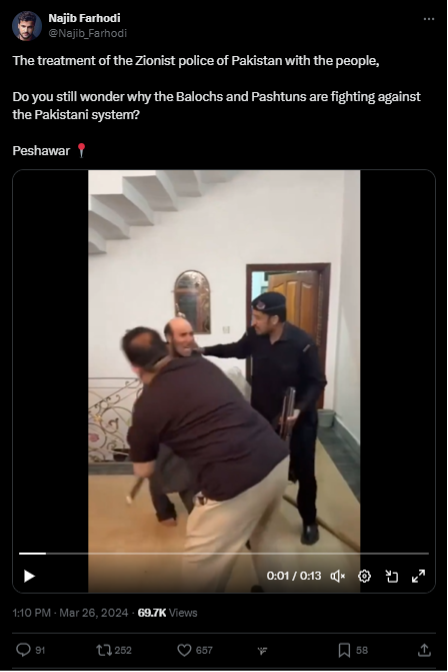
The same video was shared by Indian propaganda accounts with a similar caption.

The claim gained traction on social media, particularly on X (formerly Twitter), the claim was shared here, here and here gaining upwards of more than 70K views.
Fact Check
To verify the claim’s authenticity, a reverse imaging technique was employed. It revealed that the incident is actually from Hayatabad, Peshawar when two armed men were apprehended by police during a day-light robbery after they attempted to enter a house with the intent to rob.
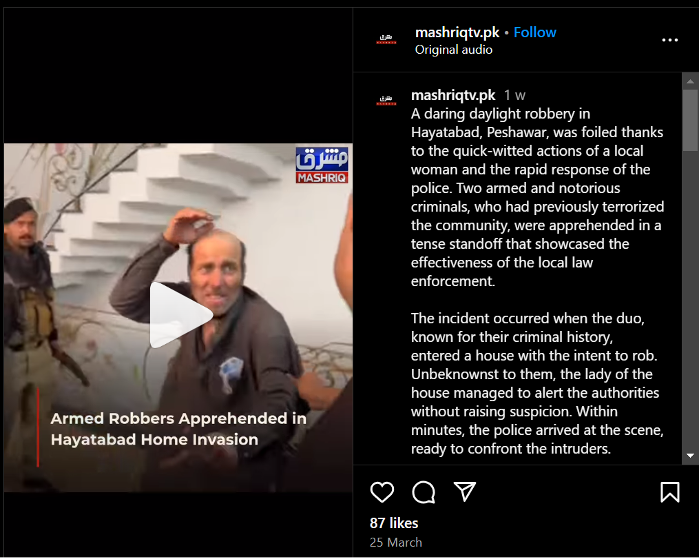
The viral claim appears to have been shared with the intent to provoke outrage against the Pakistani police force and to fuel sentiments of rebellion among certain ethnic groups like the Balochs and Pashtuns.
Conclusion
Our fact check confirms that the viral video depicting the atrocities of the police in Pakistan on citizens is misleading. The incident occurred in Hayatabad, Peshawar, involving the apprehension of armed robbers by the police. Therefore, the claim that this incident represents police brutality is false.
Case Study 5 – Taliban Shot Down Pakistan Army Helicopter
A video viral on X (Formerly Twitter) with the caption “BREAKING: Afghan forces shot down Pakistan Army Helicopter along the disputed Durand line in Kurram.” showed visuals of a militant shooting a helicopter with a launcher. The video was widely shared by Indian and Afghan propaganda accounts.
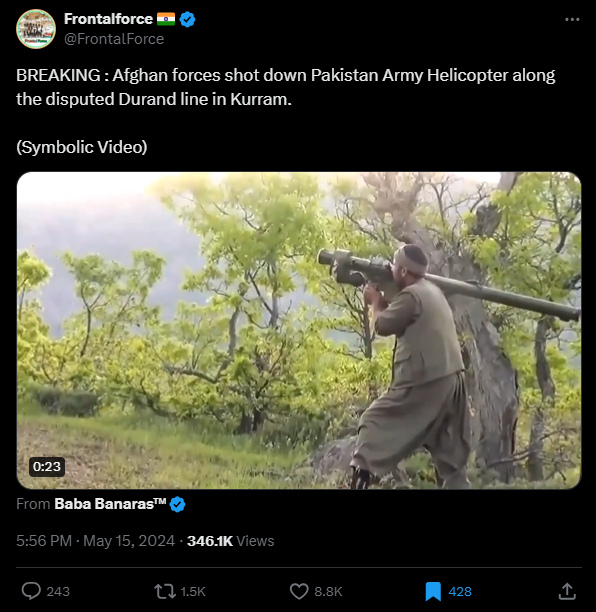

The claim gained traction on social media, particularly on X (formerly Twitter), the claim was shared here, here, here, and here gaining upwards of more than 346K views.
Fact Check
To verify the claim’s authenticity, a comprehensive fact-checking process was initiated. A reverse imaging technique was employed, revealing that the shared video dates back to May 2016 from Kurdistan. According to reports a leftist militant group battling the Turkish state, posted a video purporting to show a fighter downing a Cobra attack helicopter with a man-portable air-defense system in the mountains of southeastern Turkey.
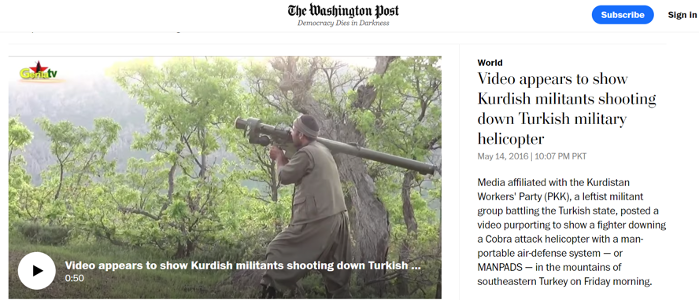
The viral claim appears to have been shared with the intent to incite tension or disseminate misinformation between Pakistan and Afghanistan. The accounts involved in sharing this video are well-known for their anti-Pakistani narrative.
Conclusion
Our fact check confirms that the shared video does not depict Afghan forces shooting down a Pakistan Army helicopter. Instead, it is from May 2016 and shows an incident involving a leftist militant group in Kurdistan targeting a Turkish helicopter. Therefore, the claim alleging the shooting down of a Pakistan Army helicopter by Afghan forces is false.
Case Study 6 – Pakistan Army Burying A Man Alive
A video viral on X (Formerly Twitter) with the caption “The number one army of the Islamic Republic of Pakistan has killed a man who is a descendant of Paringi who regularly says Allahu Akbar and Laala Allah.” showing visuals of army personals burying a man alive.
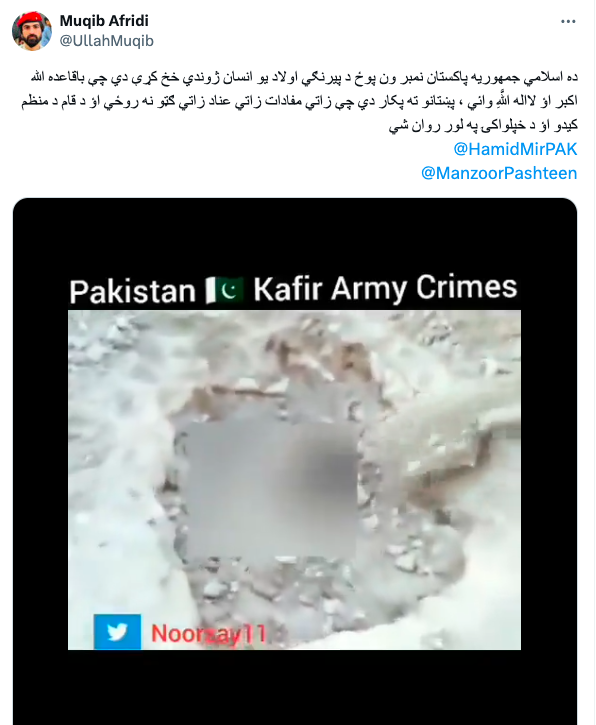
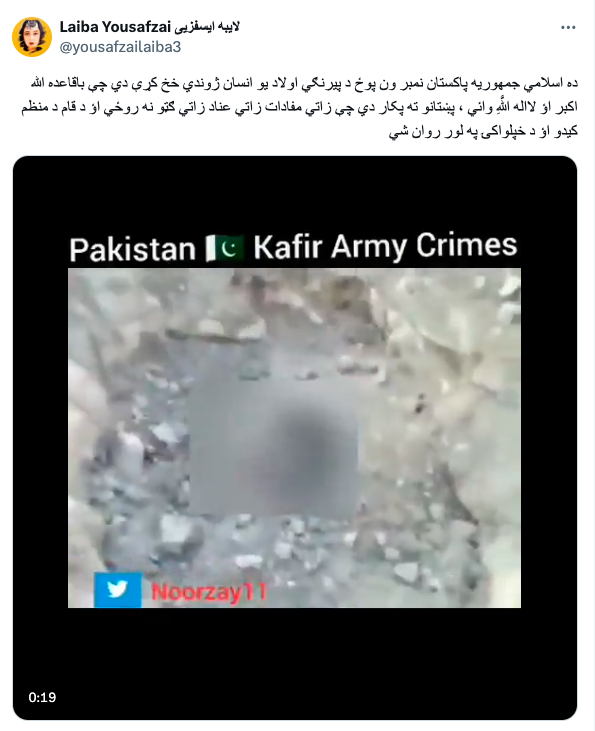
(Screenshots from X)
The claim gained traction on social media, particularly on X (formerly Twitter), the claim was shared here, here, here and here gaining upwards of more than 12.8K views.
Fact Check
To verify the claim’s authenticity, a reverse imaging technique was employed, revealing that the shared video dates back to April 2012 from Syria. According to reports, the person was a rebel against President Assad’s regime.

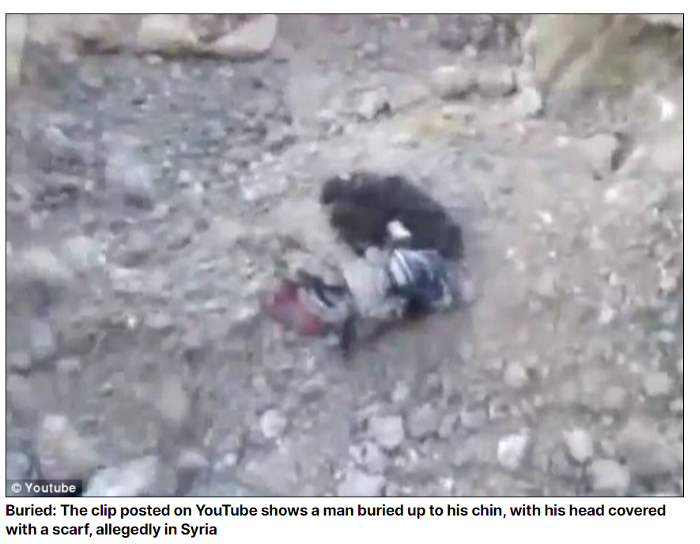
The viral claim appears to have been shared with the intent to spread misinformation and incite hostility against the Pakistan Army by falsely attributing the video to them.
Conclusion
Our fact check confirms that the shared video, while real, is misrepresented. The video is originally from April 2012 and depicts an incident involving a rebel against President Assad’s regime in Syria, not the Pakistan Army. The claim that the Pakistan Army buried a man alive is false.
Impact Analysis
The disinformation campaigns targeting the Pakistan Army, primarily orchestrated through Afghan social media accounts, have several profound implications:
Persistent propaganda efforts erode trust in the Pakistan Army and other national institutions. As false narratives gain traction, public confidence in the military’s integrity and effectiveness diminishes, potentially destabilizing national morale and cohesion. Propaganda exacerbates existing tensions between Pakistan and Afghanistan, fueling mistrust and hostility. This strain on bilateral relations can hinder diplomatic efforts, cross-border cooperation, and peace initiatives in the region.
The spread of disinformation also polarizes society, deepening divisions along ethnic, political, and sectarian lines. This division can lead to increased social unrest and violence, undermining efforts to promote unity and stability within Pakistan. False information can provoke unnecessary panic and chaos, posing direct threats to national security. Misinformation about military operations, border incidents, or internal security measures can lead to misguided public responses and strategic miscalculations.
Recommendations
Develop and enforce robust laws and regulations to address the creation and dissemination of false information, particularly targeting cross-border propaganda. Implement penalties for individuals and entities involved in spreading disinformation.
Launch national initiatives to improve media literacy among the public. Educate citizens on recognizing and critically evaluating information sources, understanding the impact of disinformation, and responding effectively the false narratives. Establish stringent fact-checking protocols to ensure the accuracy of reported information. Collaborate with independent fact-checking organizations to verify content before publication or broadcast. Run public awareness campaigns to educate audiences about the dangers of disinformation and how to identify fake news. Use various media channels to reach diverse demographic groups effectively.
Critical Consumption of Information: Encourage individuals to critically evaluate the information they encounter. Verify sources, cross-check facts, and be wary of sensational or emotionally charged content. Promote responsible sharing practices on social media. Encourage users to share verified information and report suspicious content to platform moderators. Foster a culture of constructive dialogue and open-mindedness. Engage with differing viewpoints respectfully and avoid spreading unverified information that can contribute to polarization.
By implementing these recommendations, policymakers, media outlets, and the public can collectively combat the spread of false information, mitigate the impact of propaganda campaigns, and strengthen the resilience of Pakistani society against disinformation.





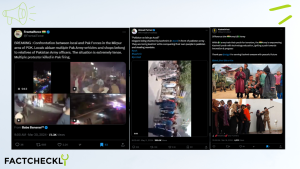




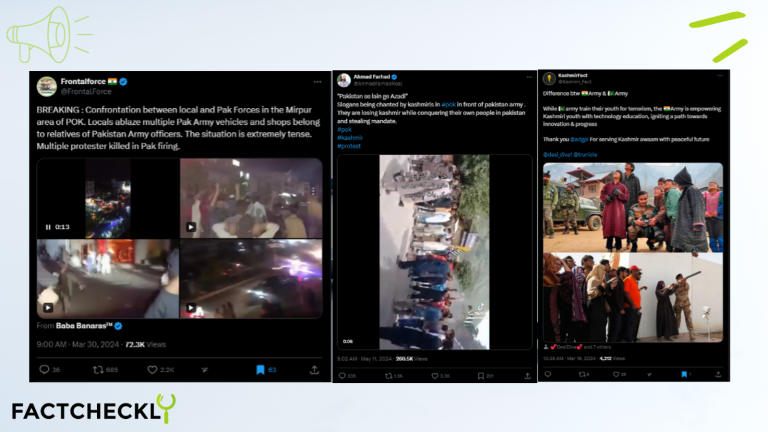



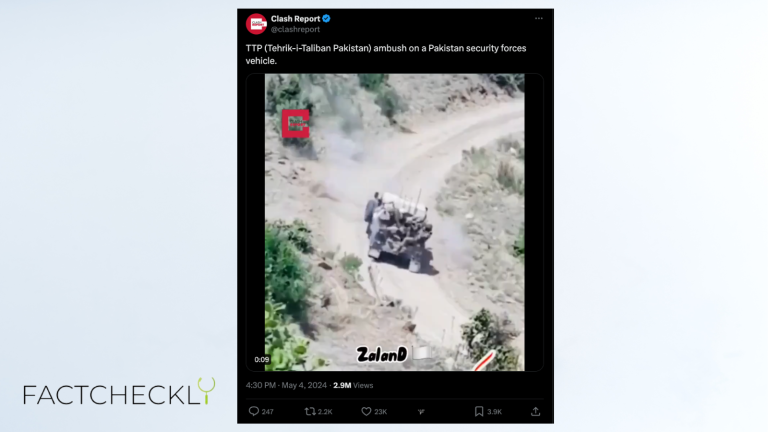
+ There are no comments
Add yours